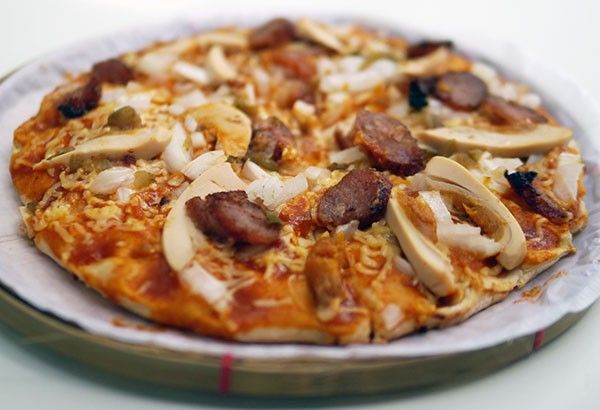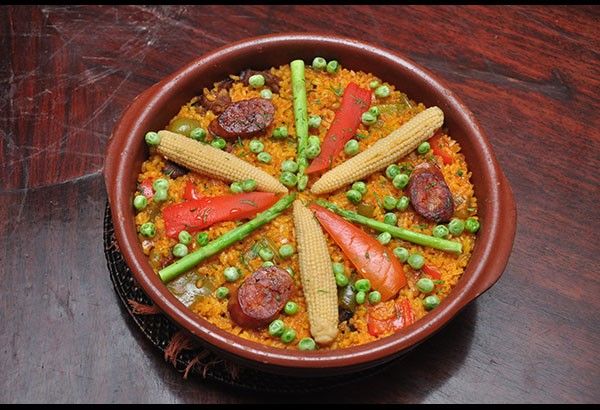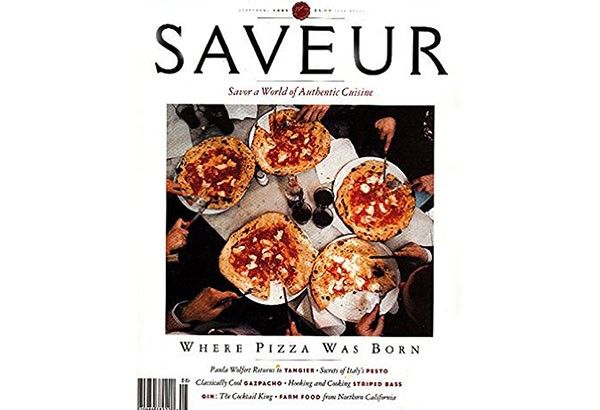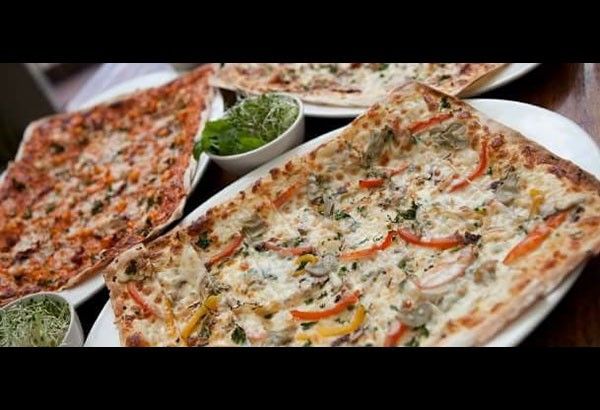What do Jamie Oliver, Bill de Blasio, Bob Dylan and William Shakespeare have in common?


The Spaniards are up in arms lately over British chef Jamie Oliver’s incursion into an iconic Spanish domain. The “Naked Chef” was caught with his pants down (pun intended) committing a “no-no” that horrified the usually opinionated but polarized Spaniards: adding the highly spiced paprika chorizo into his “Spanglish” version of the paella.
“Que horror! What do the Brits know about cooking, anyway?” must have been the collective outcry.
What’s the big deal, one may ask? Haven’t we Filipinos and many other cocineros from around the world been doing that for generations? And the dish is tastier for it, I would hasten to add.
What paella is
To set the record straight, the word paella originally refers to the wide shallow cooking pan, but nowadays it generally means the rice dish cooked in it. Paellera/ro, on the other hand, is the maker or cook (cocinera/ro), though it is more commonly used today to mean the cooking pan in which the rice dish is prepared. Confusing enough yet?
Paella, the rice dish, traces its origins to the rice-growing eastern Spanish province of Valencia. Its requisite ingredients are the Bomba rice (firm and loose) or Senia rice (sticky and lumpy), olive oil, sofrito, saffron and the rest can vary according to the maker and season of the year, which could include any meat, fish, shellfish, vegetables and beans. Its popularity has spread across Spain, with each region, as well as household, having its own version, but consensually never with chorizo. Lest I forget, a measure of a good paella is the socarrat — that crisp crust scraped from the bottom of the paellera.
Thus, there is paella Valenciana with mixed meats (usually chicken and rabbit), snail, seafood and assorted beans or sometimes artichoke; mariscos or seafood only; negra or squid and its ink, vegan; mixta or freestyle combination of any or all of the above.
But what the Valencians consider the only “authentic paella” is the use of seafood (still in its shell) and green beans (bajoqueta and tavella) or white beans (garrofón,) with a variation of shelled seafood called paella del senyoret.
Once, I came across a Spanish cookbook stating the tenets of an authentic Valencian paella. To start with, it has to be cooked by a man (it did not specify, though, if he has to be from Valencia.) Secondly, it has to be done out in the field or countryside, with the use of newly gathered dry grapevine branches to stoke a fire (the grapevine branches are believed to add a certain smoky aroma to cooked paella.) The meat of choice is rabbit, newly caught from a hunt, and snails gathered from the wild. (I imagine the extra virgin olive oil, saffron and Bomba rice are store-bought.)
The recipe sounds more like a romanticized cooking adventure, for how many of us mortals could actually experience such an ideal setting? And if you remove one tenet from the equation — if it is cooked by a woman, for instance — will it no longer qualify as “authentic”?
It is quite disappointing that the Spaniards raised hell over which chorizo can be properly used in the paella, considering they initiated the exchange and cross-culturalization of ingredients some 500 years ago. Our respective cuisines wouldn’t be what they are today without this sharing. It is out-of-the-box thinking that produces the great minds of molecular and avant-garde cuisine — the Adrias, Arzaks, Rocas et al, Spaniards all, to be sure. They have explored the limitless boundaries of gastronomy, revolutionizing the way we regard and eat food. Where would we be today if nobody challenged the doctrine that the earth was flat?
Closer to home, there was a controversy here in Manila in the 1970s as to whether paella should be dry or wet, but whichever, both had chorizo in it.
And while nobody else was looking, Alba Restaurante Español, the Manila’s oldest and longest-running traditional Spanish restaurant, serves 15 variants of this rice dish, including a double whammy with pork sisig and cochinillo. Of the 15, only Valenciana has chorizo in it together with chicken, pork, seafood and veggies.
At Circulo Restaurant of chef J Gamboa in Makati City, on the other hand, the most popular of its four paella variants is Paella a la Montaña with portabella mushrooms, roasted garlic, asparagus and truffle oil. It also has seafood Marinara and a Negra with squid and its ink. Upon request, Circulo will do a mean Paella Valenciana which is a Marinara with chorizo, duck and pork.
And nobody is crying fowl. (Wink, wink.)
So, is it Spanish or Pinoy? Call it Castilloy.
Hands vs. fork and knife
Meanwhile, on the other side of the Atlantic, there was another brouhaha over two years ago just as the North American East Coast was being battered by the arctic surge. New York City’s populist (man for the ordinary people, makamasa) mayor Bill de Blasio was caught on video (released by City Hall no less) eating pizza with a knife and fork at Goodfellas Pizza in Staten Island. That’s tantamount to having then President Erap eating with the troops in a boodle fight over banana-leaf covered table using a spoon and fork (the Pinoy’s choice of flatware).
New Yorkers do take their pizza seriously, just as they love criticizing their politicians. They eat it with their hands by folding a huge wedge midway lengthwise and then start chomping on the pointed end. To do otherwise is blasphemy for them; at the very least, they’ll know you’re a tourist. But to be the mayor of the city and do otherwise is unforgivable. It was nicknamed “forkgate” or “pizzagate” by media and denizens. New York-style pizzas are baked pretty large, thick crust with sloppy centers, and a slice is usually folded when eaten with one’s hand.
Before it died a natural death, a longtime friend of the mayor said this in an interview in the New York Times, apologizing for the mayor’s misdemeanor: “He’s from Boston. He doesn’t know any better.” The poor mayor defended himself by saying: “In my ancestral homeland, it is more typical to eat with a fork and knife. I’ve been to Italy a lot and I picked up the habit for certain types of pizza.” But the last word came from another news article: “Why shouldn’t people eat pizza however the heck they want?” Amen to that!
Back across the Atlantic in the land where pizza originated, the Italians were probably in stitches, hysterically laughing at the North Americans’ bickering. “Look at those crazy gringos fighting over on how they should eat our pizza, as if they have nothing else to do. We’ve forgiven them how they’ve bastardized it in the first place. What do they know about cooking, anyway?” must have been the collective reaction of the passionate Latinos over their national patrimony.
What pizza is
Pizza is basically a baked flatbread generally topped with tomato sauce and cheese, with variable toppings of meats, seafood, vegetables and other condiments. The present-day pizza first appeared in the back alleys of Naples, Italy, where the “authentic Napoletana/Neapolitan” pizza originated, and it has always been eaten with a knife and fork, even by the common folk. It has to be eaten while hot, the reason for using the utensils.
Its nomenclature and recipe are tightly guarded by the Associazione Verace Pizza Napoletana (the True Neapolitan Pizza Association), which was founded in 1984. According to its rules, to be called an “authentic Neapolitan pizza, its dough must be made from Type 0 or 00 wheat flour, using natural Neapolitan yeast or brewer’s yeast, salt and water, and must be kneaded by hand or with a low-speed mixer. The tomatoes should be the San Marzano variety, grown on the volcanic plains south of Mount Vesuvius, and mozzarella di bufala Campana made with milk from water buffalo raised in the marshlands of Campania and Lazio.”
Though the original one was called Pizza Margherita having tomatoes, sliced mozzarella, basil and extra virgin olive oil (representing the tri-colors of the Italian flag), other traditional variants were created like alla marinara (seafood), capricciosa (mozzarella cheese, baked ham, mushroom, artichoke and tomato), and pugliese (tomato, mozzarella and onions). Endless variants have arisen around the world over the decades since it first appeared as a “poor man’s meal.”
The first pizzeria in the US was opened in New York’s Little Italy in 1905. It was larger than its progenitor, and at that time, what mattered more were the toppings, not so much the baked flat bread.
Well, there’s the rub — coexisting are Napoletana pizza, New York-style pizza, Chicago deep-dish pizza, California style pizza, just as we have our very own Pinoy-style pizza with sweetish tomato sauce, topped with pineapple bits, sweet longanisa, salted egg, sisig, bagnet, dinuguan (pork blood stew) and what have you.
There was a time Magoo’s Pizza didn’t cut corners (pun intended) with the round pie with its square pizza. And in the past five years or so, local restaurateur Swiss/Italian chef Chris Locker reinvented the baked round flat bread by making it thinner into a rectangle that could be rolled with green salad calling it panizza/rollizza. It has become a national sensation that has been much copied and called many other names. We haven’t heard a peep of protest from the Italians. Wait till they get a taste of our very own sweet spaghetti (wink, wink).
In this age of globalization, authenticity seems to be a very gray line. It’s becoming more and more irrelevant.
So, back to the million-dollar question: What do Jamie, Bill, Bob and William have in common? Shakespeare would most probably have reacted to the chorizo and pizza brouhaha thus: “What’s in a name? That which we call a rose by any other name would smell as sweet. There’s so much ado over nothing!”
And Nobel laureate Bob Dylan might have the last word: “The answer, my friend, is blowin’ in the wind.”




















